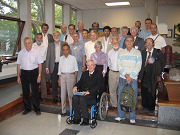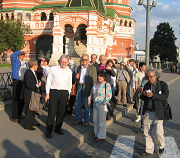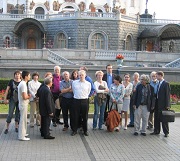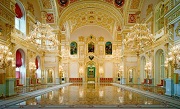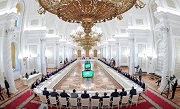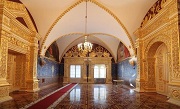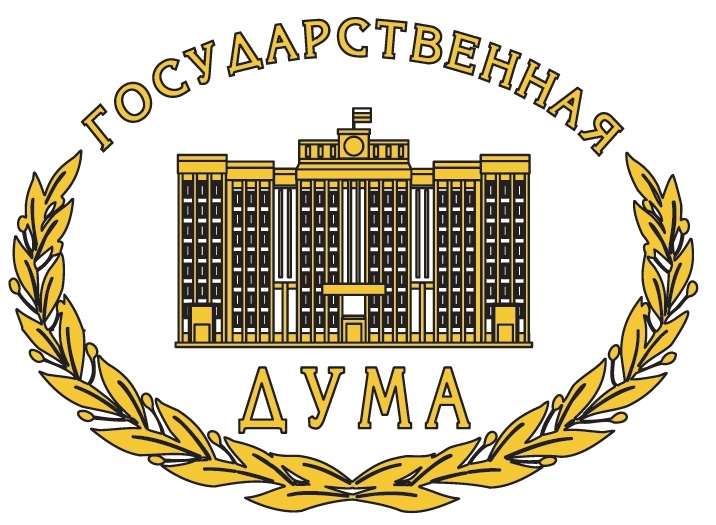



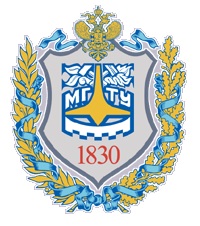
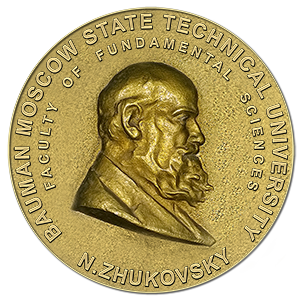
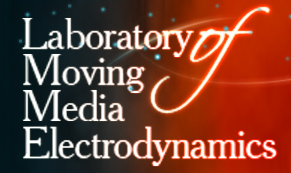
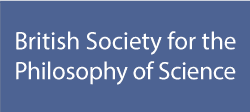
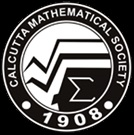




Bauman Moscow State Technical University
5, 2-nd Baumanskaya street, Moscow, 105005 Russia
–•–•I International Meeting
Physical Interpretations of Relativity Theory - 2019
01-05 July 2019
Moscow, Rubtsovskaya nab., 2/18- Video
- Photos
- International Scientific Committee
- International Organizing Committee
- Invited Speakers
- Important dates
- Support
- Informing Letters
- Participants
- General program
- Scientific program
- Preliminary list of talks, including plenary and poster
- –Рdstracts
- BMSTU
- Laboratory Building of BMSTU
- Department of Physics
- Transport to BMSTU
- Accommodation
- Registration Fee
- Auditorium
- Permission, visa
- Invitation
- Cultural program
- Meal
- Translation (Interpretation)
- Moscow PIRT Proceedings
- Format for abstracts and papers

Video
Photos PIRT-2019
Excursion in the historical center of Moscow
Friendly football match
International Scientific Committee
- Vladislav Pustovoit, Russian Academy of Science, Bauman University, Russia (Chairman)
- Vladimir Gladyshev, Bauman University, Russia (Co-Chairman)
- Alexei Starobinsky, Landau Institute for Theoretical Physics, Russia (Co-Chairman)
- Andrey Morozov, Bauman University, Russia (Vice-Chairman)
- Anatoly Aleksandrov, Bauman University, Russia
- Barry Barish, California Institute of Technology, United States
- Aroonkumar Beesham, University of Zululand, South Africa
- David Blair, University of South Western Australia, Australia
- Anatol Cherepashchuk, Sternberg Astronomical Institute Moscow University, Russia
- Alexander Chernikov, Bauman University, Russia
- Sergei Chervon, Ulyanovsk State Pedagogical University, Russia
- Naresh Dadhich, IUCAA, PUNE, India
- John Dainton, Liverpool University, Great Britain
- Georgii Izmailov, Moscow Aviation Institute, Russia
- Nikolay Kardashev, Astro Space Center of P.N. Lebedev Physical Institute of RAS, Russia
- Louis Kauffman, University of Illinois at Chicago, United States
- Richard Kerner, University Pierre et Marie Curie, France
- Vassily Manturov, Bauman University, Moscow State University, Russia
- Bivudutta Mishra, BITS-Pilani, Hyderabad Campus, India
- Nicola Napolitano, INAF Astronomical Observatory of Capodimonte, Italy
- Guido Pizzella, University of Rome, Italy
- Konstantin Postnov, Sternberg State Astronomical Institute Lomonosov Moscow State University, Russia
- Carlos Romero, Universidade Federal da Paraiba, Brazil
- Peter Rowlands, University of Liverpool, United Kingdom
- Valentin Rudenko, Sternberg State Astronomical Institute Lomonosov Moscow State University, Russia
- Mikhail Sazhin, Sternberg State Astronomical Institute Lomonosov Moscow State University, Russia
- Sergey Sushkov, Kazan Federal University, Russia
- Roland Triay, Centre de Physique Théorique CNRS - Aix- Marseille University, France
- Nina Tyannikova, Bauman University, Russia
- Rainer Weiss, Massachusetts Institute of Technology, United States
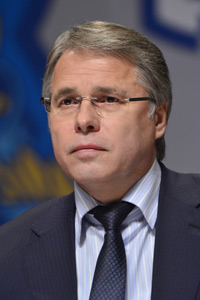
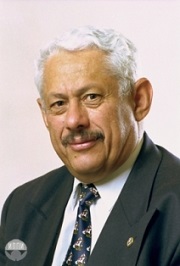
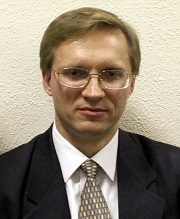
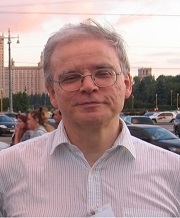
International Organizing Committee
- Anatoly Alexandrov, Bauman University, Russia (Chairman)
- Vladimir Gladyshev, Bauman University, Russia (Vice-Chairman)
- Alexander Chernikov, Bauman University, Russia
- Sergei Chervon, Ulyanovsk State Pedagogical University, Russia
- Georgii Izmailov, Moscow Aviation Institute, Russia
- Vassily Manturov, Bauman University, Moscow State University, Russia
- Andrey Morozov, Bauman University, Russia
- Peter Rowlands University of Liverpool, United Kingdom
- Valentin Rudenko, Sternberg State Astronomical Institute Lomonosov Moscow State University, Russia
- Sergey Siparov, St. Petersburg State University of Civil Aviation, Russia
- Sergey Sushkov, Kazan Federal University, Russia
- Nina Tyannikova, Bauman University, Russia
- Olga Nebritova, Bauman University, Russia
Invited Speakers
- Alcides Garat, Universidad dela Republica, Uruguay
- Alexander Balakin, Kazan (Volga region) Federal University, Russia
- Alexei Starobinsky, Landau Institute for Theoretical Physics, Russia
- Andrei Lebed, University of Arizona, USA
- Andrey Grib, Institute for Problems in Mechanics RAS, Russia
- Antonio –°. Gutierrez-Pineres, Universidad Industrial de Santander, Colombia
- Aroonkumar Beesham, Univversity of Zululand, South Africa
- Bivudutta Mishra, BITS-Pilani, Hyderabad Campus, India
- Carlos Romero, Universidade Federal da Paraiba, Departamento de Fisica, Brazil
- Godwin Ibeh, Nigerian Defence Academy, Faculty of Science, Department of Physics, Nigeria
- Gogfrey Akpojotor, Delta State University, Faculty of Science, Physics Department, Nigeria
- Gy√ґrgy Darvas, Symmetrion, Hungary
- Innocenzo M. Pinto, University of Sannio at Benevento, Italy
- Joann Sydney Rowlands, University of Liverpool, United Kingdom
- Leo Medeiros, Rio Grande do Norte Federal University, Brazil
- Louis Kauffman, University of Illinois at Chicago, United States
- Muhammad Sharif, University of the Punjab, Pakistan
- Muhammad Zubair, COMSATS University Islamabad, Pakistan
- Peter Rowlands, University of Liverpool, United Kingdom
- Sergey Chervon, Ulyanovsk State University, Russia
- Sunil Kumar Tripathy, Indira Gandhi Institute of Technology, Sarang, India
- Sunil Maharaj, University of KwaZulu-Natal, South Africa
- Vladimir Lipunov, Sternberg Astronomical Institute Moscow University, Russia
- Vladimir Vargashkin, Oryol State University, Russia
- Vladislav Pustovoit, Russian Academy of Science, Bauman University, Russia
- Yuri Pavlov, Institute of Problems of Mechanical Engineering, Russian Academy of Sciences, Russia
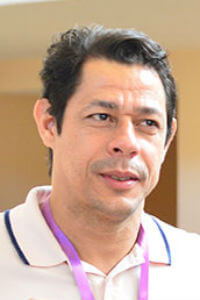
Universidad Industrial de Santander, Colombia
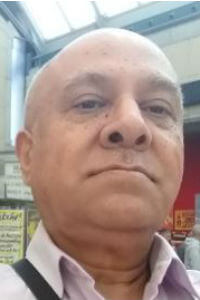
Univversity of Zululand, South Africa
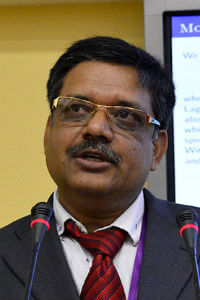
BITS-Pilani, Hyderabad Campus, India
Important dates
Registration вАУ March 1st, 2019
Submission of Abstracts вАУ April 1st, 2019
Submission of Papers вАУ August 1st, 2019
Support
- Russian Foundation for Basic Research (RFBR)
- The State Duma Committee on Education of the Russian Federation
- Department of Physics, University of Liverpool, Great Britain
- Russian Gravitational Society
- Moscow Physical Society
- The International Society on General Relativity & Gravitation
- British Society for the Philosophy of Science
- Calcutta Mathematical Society
- The Universe
- The Optical Society (OSA)
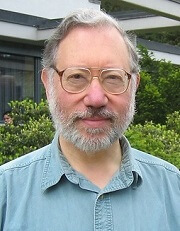
First informing letter
Participants PIRT-2019
- Abdullin Salavat, Bauman Moscow State Technical University, Russia
- Akpojotor Godfrey, Delta State University, Nigeria
- Alimkina Irina, Moscow State Pedagogical University, Russia
- Antonyuk Pavel, Moscow State University, Russia
- Avramenko Arkady, P.N. Lebedev Physical Institute of RAS, Russia
- Balakin Alexander, Kazan Federal University, Russia
- Beesham Aroonkumar, Univversity of Zululand, South Africa
- Berezin Victor, Institute for Nuclear Research of the Russian Academy of Sciences, Russia
- Bezerra Valdir Barbosa, Universidade Federal da Paraíba, Brazil
- Bogoslovsky George, Skobeltsyn Institute of Nuclear Physics, Lomonosov Moscow State University, Russia
- Brassel Byron, University of KwaZulu-Natal, South Africa
- Burinskii Alexander, NSI, RAS, Russia
- Chernitskii Alexander, St.-Petersburg State Chemical Pharmaceutical University, Russia
- Chervon Sergey, Ulyanovsk State Pedagogical University, Russia
- Darvas Gy√ґrgy, Symmetrion, Hungary
- Dharmadarshi Kushan, Sardar Vallabhbhai National Institute of Technology, India
- Dokuchaev Vyacheslav, Institute for Nuclear Research of the Russian Academy of Sciences, Russia
- Dumin Yury, Sternberg Astronomical Institute, Lomonosov Moscow State University, Russia
- Emtsova Elena, Sternberg Astronomical Institute, Lomonosov Moscow State University, Russia
- Eroshenko Yury, Institute for Nuclear Research (INR) of the Russian Academy of Sciences, Russia
- Filatov Vladimir, Bauman Moscow State Technical University, Russia
- Fil'chenkov Michael, Peoples' Friendship University of Russia, Russia
- Fisenko Stanislav, Moscow State Linquistic University, Russia
- Fomin Igor, Bauman Moscow State Technical University, Russia
- Frolov Boris, Moscow Pedagogical State University, Russia
- Garat Alcides, Universidad de la Republica, Uruguay
- Gevorkyan Migran, Peoples' Friendship University, Russia
- Gitman Dmitry, P.N. Lebedev Physical Institute, Russia
- Gladyshev Vladimir, Bauman Moscow State Technical University, Russia
- Gladysheva Yana, Bauman Moscow State Technical University, Russia
- Gorelik Vladimir, Bauman Moscow State Technical University, Russia
- Grib Andrey, Institute of Problems of Mechanical Engineering, Russian Academy of Sciences, Russia
- Grunskaya Lubov, Vladimir State University, Russia
- Grushevskaya Halina, Belarusian state university, Belarus
- Gutierrez-Pineres Antonio C., Universidad Industrial de Santander, Colombia
- Ibeh Godwin, Nigerian Defence Academy, Nigeria
- Il'ichov Leonid, Novosibirsk State University, Russia
- Izmailov George, Moscow Aviation Institute, Russia
- Kalachevsky Nikolay, The PN Lebedev Physical Institute, Russia
- Kamalov Timur, Moscow Institute of Physics and Technology, Russia
- Kauffman Louis, University of Illinois at Chicago, United States
- Kauts Vladimir, Bauman Moscow State Technical University, Russia
- Kayutenko Alexander, Bauman Moscow State Technical University, Russia
- Korotaev Sergey, Bauman Moscow State Technical University, Russia
- Koryukin Artem, Kazan Federal University, Russia
- Krasnyy Ivan, The State Research Navigation-Hydrographic Institute (GNINGI JSC), Russia
- Krylova Nina, Belarusian state university, Belarus
- Krysanov Vladimir, Institute for Nuclear Research RAS, Russia
- Kudriavtsev Yurii, Russia
- Laptev Yuri, Peoples' Friendship University of Russia, Russia
- Lebed Andrei, University of Arizona, USA
- Levin Sergey, Moscow Institute for expertise and tests, Russia
- Lipunov Vladimir, MSU, Russia
- Litvinov Dmitry, Sternberg Astronomical Institute, Lomonosov Moscow State University, Russia
- Lysenskaya Elena, MSU, Russia
- Maharaj Sunil, University of KwaZulu-Natal, South Africa
- Mayburov Sergey, P.N. Lebedev Physical Institute, Russia
- Medeiros Leo, Rio Grande do Norte Federal University, Brazil
- Meierovich Boris, P.L.Kapitza Institute for Physical Problems, Russia
- Milyukov Vadim, Sternberg Astronomical Institute, Lomonosov Moscow State University, Russia
- Mishra Bivudutta, BITS-Pilani, The Inter-University Centre for Astronomy and Astrophysics, India
- Monakhov Vadim, Saint Petersburg State University, Russia
- Mubarakshin Iskander, Mari State University, Russia
- Nikolaev Aleksei, University of KwaZulu-Natal, South Africa
- Novikov Dmitriy, Astro Space Center FIAN, Russia
- Patrushev Alexander, Bauman Moscow State Technical University, Russia
- Pavlov Dmitriy, The Research Institute of Hypercomplex Systems in Geometry and Physics, Russia
- Pavlov Yuri, Institute of Problems in Mechanical Engineering of the Russian Academy of Sciences, Russia
- Petrov Alexander, Lomonosov Moscow State University, Russia
- Petrova Ludmila, Moscow State University, Russia
- Pichkurenko Svetlana, Bauman Moscow State Technical University, Russia
- Pinto Innocenzo M., University of Sannio at Benevento, Italy
- Pokrovsky Yury, National Research Center ¬ЂKurchatov Institute¬ї, Russia
- Postnov Konstantin, Sternberg Astronomical Institute, Lomonosov Moscow State University, Russia
- Pustovoit Vladislav, RAS, Bauman University, Russia
- Ray Subharthi, University of KwaZulu-Natal, South Africa
- Romero Carlos, Universidade Federal da Paraiba, Brazil
- Rowlands JoAnn Sydney, University of Liverpool, United Kingdom
- Rowlands Peter, University of Liverpool, United Kingdom
- Sharandin Eugene, Bauman Moscow State Technical University, Russia
- Sharif Muhammad, University of the Punjab, Pakistan
- Shishanin Andrei, Bauman Moscow State Technical University, Russia
- Silagadze Zurab, Budker Institutr of Nuclear Physics, Russia
- Siparov Sergey, State University of Civil Aviation, Russia
- Starobinsky Alexei, Landau Institute for Theoretical Physics RAS, –†–Њ—Б—Б–Є—П
- Strunin Andrey, Bauman Moscow State Technical University, Russia
- Trell Erik, Link√ґping University, Sweden
- Tripathy Sunil Kumar, Indira Gandhi Institute of Technology, India
- Vargashkin Vladimir, Oryol State University named after I.S.Tourgueniev, Russia
- Vladimirov Yuriy, Moscow State University, Russia
- Vyatchanin Sergey, M.V.Lomonosov Moscow State University, Russia
- Yurasov Nikolay, Bauman Moscow State Technical University, Russia
- Zhogin Ivan, Bourevestnik, JSC, Russia
- Zloshchastiev Konstantin, Durban University of Technology, South Africa
- Zubair Muhammad, COMSATS University Islamabad, Pakistan
- Ahmed Jamil, COMSATS University, Pakistan
- Amoroso Richard, Noetic Advanced Studies Institute, United States
- Azmat Hina, COMSATS University, Pakistan
- Behera Dipanjali, Indira Gandhi Institute of Technology, India
- Hajra Sankar, Indian Physical Society, India
- Ray Pratik Premadarshi, Birla Institute of Technology and Science- Pilani, India
- Sahoo Pradyumn Kumar, BITS-Pilani, India
- Singh Vijay, University of Zululand, South Africa
- Bibi Rashida, National University of Science and Technology, Pakistan
- Brandyshev Petr, Moscow State Pedagogical University, Russia
- Chaadaev Alexandr, Ulyanovsk State Pedagogical University, Russia
- Khetzeva Marina, Institute of Physics, Technology and Information Systems, Moscow Pedagogical State University, Russia
- Lin Tun, Bauman Moscow State Technical University, Russia
- Mayorova Tatyana, Ulyanovsk State Pedagogical University, Russia
- Nekrasov Grigory, Moscow Region State University, Russia
- Savelova Elena, Bauman Moscow State Technical University, Russia
- Chechetkin Valerij, Keldtsh Institute of Applied Mathematics, Russia
- Chelnokov Michael, Bauman Moscow State Technical University, Russia
- Bulyzhenkov Igor, P.N. Lebedev Physical Institute of RAS, Russia
- Dubrovich Victor, SAO RAS, Russia
- Galanin Michael, Keldtsh Institute of Applied Mathematics, Russia
- Gladush Valentin, Dnipro National University, Ukraine
- Gusev Anatolii, Sternberg Astronomical Institute, Lomonosov Moscow State University, Russia
- Bisikalo Dmitry, Institute of Astronomy RAS, Russia
- Babourova Olga, Moscow Automobile and Road Construction State Technical University, Russia
- Kirillov Alexandr, Bauman Moscow State Technical University, Russia
- Komshin Aleksandr, Bauman Moscow State Technical University, Russia
- Konstantinov, Bauman Moscow State Technical University, Russia
- Korolkova Anna, Peoples' Friendship University, Russia
- Kostromina Elena, Volga State University of Technology, Russia
- Kulagin V., Sternberg Astronomical Institute, Lomonosov Moscow State University, Russia
- Kulyabov Dmitry, Peoples' Friendship University, Russia
- Mordvinov Boris, All-Russian Scientific Research Institute Of Technical Physics (VNIITF), Russia
- Morozov Andrey, Bauman Moscow State Technical University, Russia
- Petrov Vladimir, A. A. Logunov Institute for High Energy Physics NRC, Kurchatov Institute, Russia
- Portnov Dmitry, Bauman Moscow State Technical University, Russia
- Rudenko Valentin, Sternberg Astronomical Institute, Lomonosov Moscow State University, Russia
- Sazhin Mikhail, Sternberg Astronomical Institute, Lomonosov Moscow State University, Russia
- Selivanov Alexey, Bauman Moscow State Technical University, Russia
- Saibatalov Rustam, A.A.Friedmann Laboratory for Theoretical Physics, Russia
- Sushkov Sergey, Kazan State University, Russia
- Tsipenyuk Dmitry, Prokhorov General Physics Institute of the Russian Academy of Sciences, Russia
- Zherihina Larisa, Moscow Aviation Institute, Russia
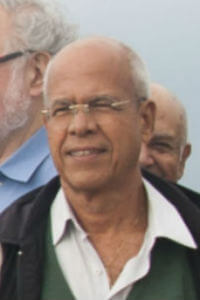
Universidade Federal da Paraiba, Departamento de Fisica, Brazil
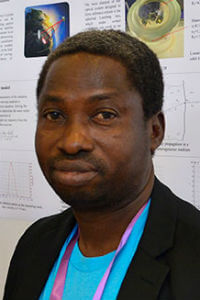
Delta State University, Faculty of Science, Physics Department, Nigeria
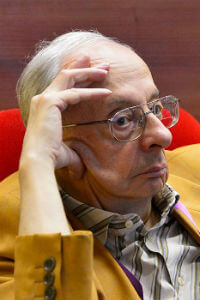
Symmetrion, Hungary
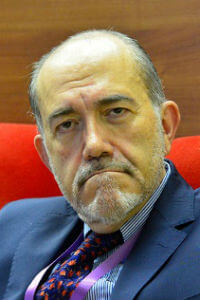
University of Sannio at Benevento, Italy
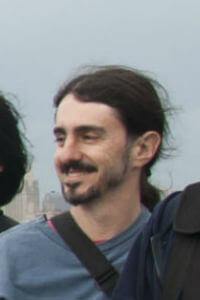
Rio Grande do Norte Federal University, Brazil
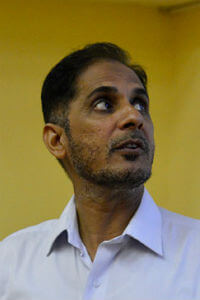
University of the Punjab, Pakistan
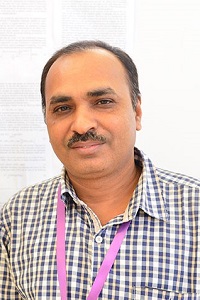
Indira Gandhi Institute of Technology, Sarang, India

University of KwaZulu-Natal, South Africa
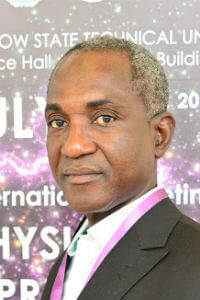
Nigerian Defence Academy, Faculty of Science, Department of Physics, Nigeria
Preliminary list of talks, including plenary and poster
- Alimkina I.S., Filatov V.V., Gorelik V.S., Pichkurenko S.V., Influence of Control Signal on the Amplitude-Frequency Characteristic of the Damper Based on Magnetorheological Elastomers Paraphoton lasing in periodic dielectrics.
Bauman Moscow State Technical University, Moscow State Pedagogical University, Russia - Tripathy S.K., Bouncing models in extended gravity theory.
Indira Gandhi Institute of Technology, India - Trell E., A Space-Frame Periodic Table Representation System Testing Relativity in Nucleosynthesis of the Elements.
Link√ґping University, Sweden - Saibatalov R., The Meaning of Cosmological Rotation.
A.A.Friedmann Laboratory for Theoretical Physics, Russia - Novikov D., Zeldovich-Sunyaev anisotropy effect and the possibility of independent measurement of cosmic microwave background dipole, quadrupole and octupole.
Astro Space Center FIAN, Russia - Gorelik V.S., Bound State of Photons and High Frequency Gravitational Waves excited in Media by Laser Emission.
Bauman Moscow State Technical University, Russia - Gladysheva Ya., Calibration of high precision surfaces of gravitational wave telescope optics.
Bauman Moscow State Technical University, Russia - Selivanov A.B. ,Gerasimov Yu.V., KonstantinovM.Yu., Emergency seismic sensing method of asteroid structure.
Bauman Moscow State Technical University, Russia - Patrushev A., Entanglement entropy in strongly correlated systems dual to anisotropic gravitational models.
Bauman Moscow State Technical University, Russia - Abdullin S. R., Field Theory as Oscillator System.
Bauman Moscow State Technical University, Russia - Gladyshev V.O., Bazlev D.A., Kayutenko A.V., The new analytics platform for the search of new scientific knowledge in relativity theory.
Bauman Moscow State Technical University, Russia - Shishanin A.O., LCFT and Liouville theory.
Bauman Moscow State Technical University, Russia - Korotaev S.M., Budnev N.M., Serdyuk V.O., Kiktenko E.O., Gorohov J.V., Orekhova D.A., Macroscopic Nonlocal Correlations in Reverse Time by Data of the Baikal Experimen.
Bauman Moscow State Technical University, Russia - Gladyshev V.O., Strunin A.G., Kayutenko A.V., Portnov D.I., Mathematical model of optical radiation propagation in a microsatellite moving in near-earth orbit.
Bauman Moscow State Technical University, Russia - Komshin A., Metrological support of technogenic systems based on the study of the influence heliogeophysical space.
Bauman Moscow State Technical University, Russia - Yurasov N. I., On the nature of a particle spin in the standard model.
Bauman Moscow State Technical University, Russia - Sharandin E., Gladyshev V., Simulation of radiation generation in a multistage laser.
Bauman Moscow State Technical University, Russia - Konstantinov M.Yu., Superluminal Fields in Bimetric Space-Time Theory.
Bauman Moscow State Technical University, Russia - Fomin I.V., The general relativistic cosmological solutions in modified gravity theories.
Bauman Moscow State Technical University, Russia - Kirillov A., Savelova E., Wormhole as a possible accelerator of high-energy cosmic-ray particles.
Bauman Moscow State Technical University, Russia - Krylova N.G., Grushevskaya H.V., Domain growth in a cosmology phase transition model with axially symmetric metrics.
Belarusian state university, Belarus - Grushevskaya H.V., Krylova N.G., Phase Transitions in Geometrothermodynamic Model of Charged generalized-NUT Black Holes.
Belarusian state university, Belarus - Mishra B., New approach to study the dynamical cosmic behaviour in extended gravity.
Birla Institute of Technology and Science- Pilani, India - Ray Pratik P, Mishra B., Stability of mix-fluids in dark energy cosmological models and an advanced diagnostic analysis.
Birla Institute of Technology and Science- Pilani, India - Zhogin I.L., Pseudogravitational waves.
Bourevestnik, JSC, Russia - Silagadze Z.K., Maziashvili M., Non-local imprints of gravity on quantum theory.
Budker Institutr of Nuclear Physics, Russia - Zubair M., Evolution of Collisional Matter in Modified Teleparallel Theories.
COMSATS University Islamabad, Pakistan - Akpojotor G., Animalu A., Edeagu S., Trell E., Generalized Lie Algebraic Geometry in R3√ЧSO(3) Configuration Space for SU(3) of Elementary Particles and for Wave-packing of Atomic Structure.
Delta State University, Nigeria - Zloshchastiev K.G., Logarithmic superfluid theory of physical vacuum.
Durban University of Technology, South Africa - Hajra S., An electrodynamic study of Shapiro time delay.
Indian Physical Society, India - Berezin V.A., Dokuchaev V.I., Eroshenko Yu.N., Smirnov A.L., Double layers in the Weyl+Einstein gravity.
Institute for Nuclear Research of the Russian Academy of Sciences, Russia - Eroshenko Yu.N., Berezin V.A., Dokuchaev V.I., Global geometry if the Vaidya spacetime.
Institute for Nuclear Research of the Russian Academy of Sciences, Russia - Dokuchaev V.I., Nazarova N.O., Smirnov V.P., Silhouette of the black hole event horizon.
Institute for Nuclear Research of the Russian Academy of Sciences, Russia - Krysanov V.A., Laser Noise Control in the Optoacostical GW Antenna.
Institute for Nuclear Research RAS, Russia - Grib A., Pavlov Yu., Penrose effect in the rotating coordinate system.
Institute of Problems of Mechanical Engineering, Russian Academy of Sciences, Russia - Balakin A.B., Dark Fluid Electrodynamics.
Kazan Federal University, Russia - Koryukin V.M., Koryukin A.V., Kostromina E.V., On the metrizability of the affine connectivity space and the unified theory of fundamental interactions.
Kazan Federal University, Russia - Starobinsky A.A., Inflation: the present status and future perspectives.
Landau Institute for Theoretical Physics RAS, Russia - Petrov A.N., Guilleminot P., Olea R., On properties of constant curvature black holes in the Einstein-AdS gravity.
Moscow State University, Russia - Mubarakshin I.R., About principal propositions of the special relativity theory.
Mari State University, Russia - Babourova O.V., Frolov B.N., On the exponential decrease of the вАЬcosmological constantвАЭ in the superearly Universe.
Moscow Automobile and Road Construction State Technical University, Russia - Izmailov G.N, Zherihina L.N., A network of precision clocks as an antenna for millihertz gravitational waves.
Moscow Aviation Institute, Russia - Levin S.F., Cosmological Distance Scale: The Scale Factor.
Moscow Institute for expertize and tests, Russia - Kamalov T.F., Instability States and Uncertainty Relation.
Moscow Institute of Physics and Technology, Russia - Frolov B.N., Babourova O.V., Khetzeva M.S., Markova N.V., Nonmetricity plane waves in post Riemannian spacetime .
"Moscow Pedagogical State University, Russia PeoplesвАЩ Friendship University of Russia, Russia" - Fisenko S., On the issue of gravitational radiation and thermonuclear fusion.
Moscow State Linquistic University, Russia - Brandyshev P.E., Higgs boson and Dark energy in conformal supergravity.
Moscow State Pedagogical University, Russia - Petrova L.I., Formatting physical fields and pseudometric manifolds. The dark matter..
Moscow State University, Russia - Antonyuk P.N., On the Habble-Lemaitre law.
Moscow State University, Russia - Vladimirov Yu.S., Physical interactions in three metaphysical paradigms.
Moscow State University, Russia - Pustovoit V., Gladyshev V., Kauts V., Morozov A., Gorelik V., Fomin I., Portnov D., Sharandin E., Kayutenko A., High frequency gravitational waves generation by optical method.
MSTU, Russia - Lipunov V.M., Gravitational-wave astrophysics: sources of gravitational waves and their localization.
Moscow State University, Russia - Pokrovsky Yu.E., Stable Compact Objects from Dark Matter in Planetary Systems.
National Research Center ¬ЂKurchatov Institute¬ї, Russia - Ibeh G., Akpojotor G., Trell E., Animalu A., Reformulation of the O(4,2)xSU(3)xU(1) Gauge Theory of Quantum Gravity using the Generic Torus as Oyibo GUT Geometrical Object.
Nigerian Defence Academy, Nigeria - IlвАЩichov L.V., Category forms of Non-Signalling and Local Causality and their duals.
Novosibirsk State University, Russia - Burinskii A., Magic of the Kerr spinning gravity: unification of gravity with particle physics.
NSI, RAS, Russia - Vargashkin V. Ya., The analysis of CMB anisotropy in temporary domain according to databases of the probes WMAP and PLANCK.
Oryol State University named after I.S.Tourgueniev, Russia - Meierovich B.E., Black hole and dark matter. Phase equilibrium.
P.L.Kapitza Institute for Physical Problems, Russia - Mayburov S., Nucleus decay oscillations as possible quantum gravity effect.
P.N. Lebedev Physical Institute, Russia - Avramenko A.E., Space-Time: from Indefinite at Locality to Generality at Infinite.
P.N. Lebedev Physical Institute of RAS, Russia - Bulyzhenkov I., UmovвАЩs thermomechanics of inertial thermal energies instead of Newtonian mechanics of cold masses.
P.N. Lebedev Physical Institute of RAS, Russia - Gevorkyan M.N., Korolkova A.V., Kulyabov D.S., Hyperbolic numbers as Einstein Numbers.
Peoples' Friendship University, Russia - FilвАЩchenkov M.L., Laptev Yu.P., Gravitational radiation from minihole coalescence and quadrupole transitions of hydrogen-like atoms.
Peoples' Friendship University of Russia, Russia - Medeiros L.G., Guzinatto R.R., Pompeia P.L., Modified Starobinsky inflation.
Rio Grande do Norte Federal University, Brazil - Monakhov V.V., Vacuum and space-time signature in the theory of superalgebraic spinors..
Saint Petersburg State University, Russia - Bogoslovsky G.Yu., A curved spacetime with DISIM b (2) local relativistic symmetry and local gauge invariance of its Finslerian metric.
Skobeltsyn Institute of Nuclear Physics, Lomonosov Moscow State University, Russia - Chernitskii A.A., Photons as solitons.
St.-Petersburg State Chemical Pharmaceutical University, Russia - Siparov S.V., Registration of gravitational waves emitted by periodic astrophysical sources and the prospects for GW-astronomy.
State University of Civil Aviation, Russia - Dumin Yu.V., Cosmological Inflation from the Quantum-Mechanical Uncertainty Relation.
Sternberg Astronomical Institute, Moscow State University, Russia - Emtsova E.D., Petrov A.N., Toporensky A.V., On conservation laws in Teleparallel gravity .
Sternberg Astronomical Institute, Moscow State University, Russia - Kauts V.L., Positronium formation in the Galaxy.
Sternberg Astronomical Institute, Moscow State University, Russia - Litvinov D., Gusev A., Kauts V., Kulagin V., Rudenko V., Space gravitational experiments with quantum standards of frequency and time.
Sternberg Astronomical Institute, Moscow State University, Russia - Postnov K., Spins of black holes in coalescing compact binaries.
Sternberg Astronomical Institute, Moscow State University, Russia - Milyukov V. K., The space-borne gravitational wave detector TianQin: mission concept and realization.
Sternberg Astronomical Institute, Moscow State University, Russia - Darvas G., Giving mass to the mediating boson of Hypersymmetry by a field transformation applying Higgs mechanism beyond the Standart Model .
Symmetrion, Hungary - Kalachevsky N.N., Perspective methods for measuring the gravitational field.
The PN Lebedev Physical Institute, Russia - Pavlov D.G., Basic properties of the time field.
The Research Institute of Hypercomplex Systems in Geometry and Physics, Russia - Chaadaev A.A., Chervon S.V., Spherically symmetric solutions in f(R,(вЦЉR)^2) gravity.
Ulyanovsk State Pedagogical University, Russia - Chervon S.V., Cosmological parameters in modified theories.
Ulyanovsk State Pedagogical University, Bauman Moscow State Technical University, Russia - Garat A., Dynamical symmetry breaking in geometrodynamics.
Universidad de la Republica, Uruguay - Gutierrez-Pineres A. C., C3-Criterion for matching asymptotically flat space-times in General Relativity.
Universidad Industrial de Santander, Colombia - Romero C., One Hundred Years of WeylвАЩs (unfinished) unified field theory.
Universidade Federal da Paraiba, Brazil - Bezerra V. B., Some remarks on the topological features of the relativity theory.
Universidade Federal da Paraíba, Brazil - Lebed A.G., Inequivalence between active gravitational mass and energy of a composite quantum body.
University of Arizona, USA - Kauffman L.H., Majorana Fermions, Braiding and the Dirac Equation.
University of Illinois at Chicago, United States - Maharaj S., Exact models: symmetries of equations and spacetime.
University of KwaZulu-Natal, South Africa - Brassel B.P., Maharaj S.D., The Boulware-Deser spacetime: Solutions and features.
University of KwaZulu-Natal, South Africa - Nikolaev A.V., Chervon S.V., Mayorova T.I., Kinetic scalar curvature extended f(R) gravity.
"University of KwaZulu-Natal, South Africa Ulyanovsk State Pedagogical University, Russia" - Rowlands P., Gravity: Local or Nonlocal.
University of Liverpool, United Kingdom - Rowlands J. S., The Nilpotent Operator.
University of Liverpool, United Kingdom - Pinto I. M., Reducing Optical Coating Thermal Noise in Interferometric Detectors of Gravitational Waves.
University of Sannio at Benevento, Italy - Sharif M., Solutions and Minimal Geometric Deformation.
University of the Punjab, Pakistan - Beesham A., The cosmological parameter: constant or dynamical.
Univversity of Zululand, South Africa - Grunskaya L.V., Isakevich V.V., Isakevich D.V., The signs of relativistic binary star systemsвАЩ influence on the EarthвАЩs electric field.
Vladimir State University, Russia - Mordvinov B., Large Dirac numbers and a new cosmological model.
, Russia - Kudriavtsev Yu., The phenomenon of the central symmetry and antisymmetry of the celestial sphere and its significance for the cosmological model of The Big Bang .
Russia - Vyatchanin S., Calculation of thermal noise of beam splitters in laser gravitational wave detectors from first principles.
M.V.Lomonosov Moscow State University, Russia - Lukanenkov A.V., Analysis of gravitational experiments.
Russia - Behera D., Cosmic transit behaviour and anisotropic Cosmological models.
Indira Gandhi Institute of Technology, India - Singh V., Beesham A., Some exact solutions of anisotropic cosmological models.
University of Zululand, South Africa - Emtsova E.D., Toporensky A.V, Velocities of distant objects in General Relativity: definitions, interpretations, misconceptions.
Sternberg Astronomical Institute, Lomonosov Moscow State University, Russia - Kudriavtsev Y., On physical and non-physical time in Cosmology and Quantum Mechanics.
Russia - Chervon S.V., Fomin I.V., Mayorova T.I., Khapaeva A.V., Cosmological parameters for f(R, (nabla R)^2) theory of gravity.
Ulyanovsk State Pedagogical University, Bauman Moscow State Technical University, Russia - Gladysh V.D., Configuration manifolds of a spherically symmetric system of gravitational and electromagnetic fields.
- Amoroso R.L., Sagnac Dual-Polarized Ring Laser Interferometric Effects of Gravity on EM-Wave Polarization.
Noetic Advanced Studies Institute, USA - Hajra S., An Electrodynamic Study of Shapiro Time Delay.
Indian Physical Society, India - Petrov V.A., On the вАЬSpecialвАЭ Relativity Genesis: Russian Connection.
A. A. Logunov Institute for High Energy Physics NRC, Kurchatov Institute, Russia - Tsipenyuk D.Yu, Andreev V.A., Approach to the gauge theories for massive fields in the extended space model.
Prokhorov General Physics Institute of the Russian Academy of Sciences, Russia - Sahoo P.K., The redshift function of traversable wormholes in f(R;T) gravity.
BITS-Pilani, India - Lukin V.V, Chechetkin V.M., Galanin M., Binary stars light curves interpretation using Yurasov 3D hydrodynamical simulation.
Keldtsh Institute of Applied Mathematics, Russia - Ahmad S., Stability of anisotropic self-gravitating fluids.
, Pakistan - Azmat H., Stability Analysis of Stellar Configurations in Modified Gravity.
COMSATS University, Pakistan - Ahmed J., Black Hole Chemistry.
COMSATS University, Pakistan
–Рdstracts
BMSTU
The history of our institution, the Bauman MHTS (Moscow Higher Technical School), or presently the Bauman MSTU (Moscow State Technical University) dates back to 1830, when Emperor Nicholas I confirmed the "statute of the industrial school" to open in Moscow. Russia's developing industry needed skilled labor in many trades. So, the aim of the new school was to train skillful artisans with a solid theoretical background to improve and spread skills in various trades all over Russia. The training personnel of the school comprised graduates of the Moscow University who specialized in mathematics, mechanics, physics and chemistry. By 1868 the academic standards of the school were so high that it was reorganized into a special institution of higher learning (Imperial Moscow Technical School or IMTS). Its major task now was to train mechanics in construction, engineering and manufacturing. The IMTS was financially supported by the Government and industrialists. Its management was democratic. Its teaching staff boasted of many talented scientists who maintained contacts with the West. All these circumstances helped the School to achieve outstanding successes in manufacturing processes and practices in the chemical, food and textile industries, metal and wood processing, and structural mechanics. During the 1876 Exhibition in Philadelphia the practically-minded Americans highly appreciated and admired the methods used by the School, recognizing them as an original "Russian system" of training engineers. In 1876, Dr. Wrinkle, President of the Boston Institute of Technology, writes to V.K.Dela-Vos, Director of the Imperial Moscow Technical School that Russia is a recognized leader in handling the important problems of engineering education, and that no other system will hence be used in America. IMTS system of handicraft education of engineers was recognized all over the world. ¬ЂRussian method¬ї became especially well-known after Vienna World Exhibition (1873) where it was awarded Big Gold Medal. IMTS was recognized the best machine-building education institution of Russia and joined the ranks of the world leading polytechnic schools. A lot of outstanding scientists taught in IMTS, such as D. Mendeleev, N. Jukovsky, P. Chebychev, S. Chaplygin, A. Yershov, D. Sovetkin, F. Dmitriev, A. Letnikov, A. Gavrilenko.
Thus, the Moscow Higher Technical School joined the ranks of "leading polytechnical schools in Europe".
The late 19th century witnessed quickening progress in electrical engineering, aeromechanics, and the power engineering industry.
In 1918, the MHTS organized several research institutes, including TSAGI (Central Aerodynamics and Hydrodynamics Institute), which eventually developed into independent structures, separating from their parent. The quick industrial expansion of the country called for new training facilities on other fields of science and technology. In 1930, the MHTS began to branch out into many new institutions of higher learning: the Moscow Aviation Institute, the Moscow Power Engineering Institute, the Military Chemical Academy, the Textile Institute, and the Moscow Civil Engineering Institute.
The MHTS continued to specialize in training engineers for the machine-building and instrumentation industries.
In 1938, the MHTS opened new departments with a defense profile: armoured vehicles and tanks, artillery, and ammunition. In 1948, a department of rocketry was added.
The following famous scientists and specialists have graduated our school: Academician A.N. Tupolev, S.P. Korolev, and many other aircraft and rocket designers and developers; Academician N.A. Dollezhal, chief designer of atomic piles; Academician A.I.Tselikov, chief designer of metallurgical engineering; Academician S.A.Lebedev, chief designer of computers.
Our School is distinguished for high-level scientific and engineering training of students, extensive relations with industries, good traditions, and high professional and moral requirements which both the professors and students feel obliged to meet and maintain.
In 1989, the MHTS was conferred a new name: the Bauman Moscow State Technical University (Bauman MSTU).
Pafnuty Lvovich Chebyshev (16 May 1821 вАУ 8 December 1894) was a Russian mathematician. Chebyshev is known for his work in the fields of probability, statistics, mechanics, and number theory. The Chebyshev inequality is used to prove the Weak Law of Large Numbers. Chebyshev is also known for the Chebyshev polynomials.
Dmitri Ivanovich Mendeleev(8 February 1834 вАУ 2 February 1907) was a Russian chemist and inventor. He formulated the Periodic Law, created his own version of the periodic table of elements, and used it to correct the properties of some already discovered elements and also to predict the properties of eight elements yet to be discovered.
Nikolay Yegorovich Zhukovsky (17 January 1847вАУ 17 March 1921) was a Russian scientist and a founding father of modern aero- and hydrodynamics. Whereas contemporary scientists scoffed at the idea of human flight, Zhukovsky was the first to undertake the study of airflow.
Sergei Pavlovich Korolev (12 January 1907 вАУ 14 January 1966) was the lead Soviet rocket engineer and spacecraft designer in the Space Race between the United States and the Soviet Union during the 1950s and 1960s. He is considered by many as the father of practical astronautics.
Vladimir Nikolayevich Chelomey (30 June 1914 вАУ 8 December 1984) was a Soviet mechanics scientist, aviation and missile engineer. He invented the very first Soviet pulse jet engine and was responsible for the development of the world's first anti-ship cruise missiles and ICBM complexes.
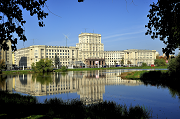
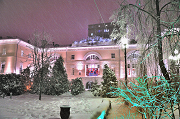
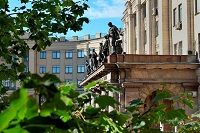
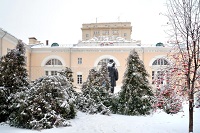
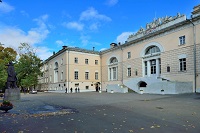
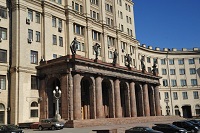
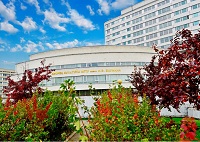
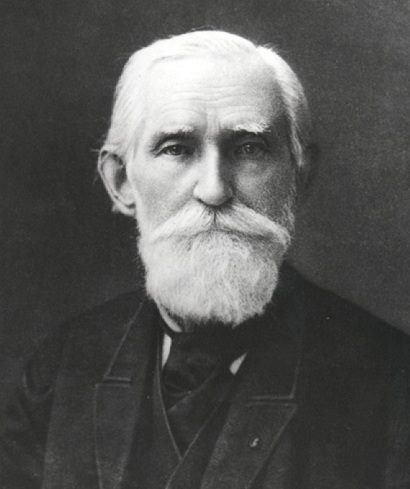

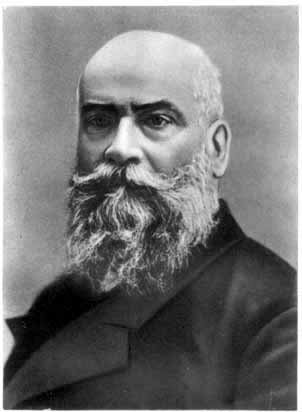
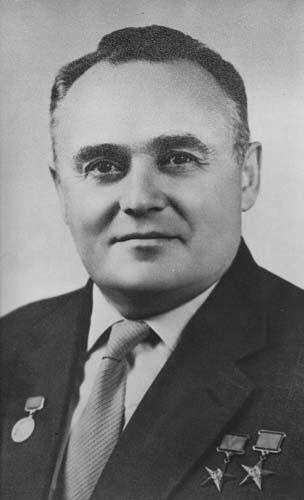
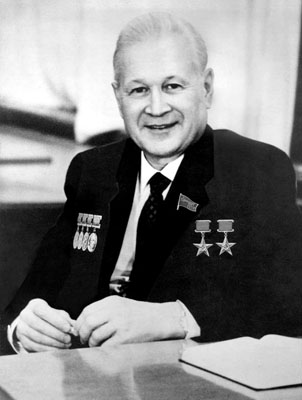
Laboratory Building of BMSTU
The Laboratory Building of BMSTU was opened in 2004.
At the opening ceremony Minister of Education Vladimir Filippov called it "a symbol of the RussiaвАЩs rebirth".
The total area of the 11-storey building is over 80 thousand sq. meters (equivalent of 11 football fields). 5 thousand students of all departments can have classes there simultaneously.
The building houses 100 lecture halls, 20 computer classrooms, 19 elevators, a library, which can store nearly 1 million books, a reading room for 700 visitors, a concert hall having almost 1,200 seats and a conference hall for 130 seats.
The Laboratory Building stands on the bank of the River Yauza and its similarity with a ship's hull explains its nickname, that is "an icebreaker".
The Fundamental Science Scientific and Training Complex (visit http://fn.bmstu.ru for the Russian version and http://fn.bmstu.ru/index.php/en - for the English version) is located on the 4th, 6th, 8th, 9th and 10th floors of the Laboratory Building as well as in the main building on 2nd Baumanskaya street.
The PIRT Conference has been held in the Conference Hall of the Laboratory Building since 2005.
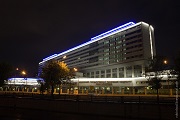
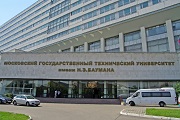
Department of Physics
Department of Physics of Bauman Moscow State Technical University (BMSTU) has worked since 1832, when Physical Study to demonstrate physical phenomena during lectures for students was created at the Craft Institution of Moscow Training House.
On the first June in 1968 the Craft Institution was reformed into Emperor Moscow Technical Specialized School and the Physical Study got a new official status as Department of General and Applied Physics. Professor A.S.Vladimirskii, who had graduated from Moscow University, headed the Department.
The brightest historical moments of the Department were linked with names of professor V.S.Shchegolyaev (the head of the Department since 1886 till 1912) and academician P.P.Lazarev (the head of the Department since 1912 till 1925).
At different times a number of remarkable scientists have worked at the Department: academician, president of USSR Science Academy S.I.Vavilov, corresponding-members of USSR Science Academy K.A.Krug and A.S.Predvoditelev, professors A.B.Mlodzievskii, A.K.Trapeznikov, A.V.Shpol'skii, N.E.Uspenskii, V.D.Zernov, K.A.Putilov.
At present the staff of the Department of Physics consists of 14 professors, 47 readers, 8 senior teachers and 7 professors, 15 readers, 7 senior teachers occupy private positions.
The main scientific directions of the Department of Physics are
- Electro-hydrodynamics (Prof. I.N. Aliev)
- Nonreversible process research in natural media. Theory of precise measurements. (Prof. A.N. Morozov, amor59@mail.ru)
- Electrodynamics of moving media; experimental tests of the relativity theory and electrodynamics (Prof. V.O. Gladyshev, dekan-fn@mail.ru)
- Applied electrodynamics and radio-physics (Prof. O.S. Litvinov)
- Theory of strength and destruction for solid bodies (Prof. V.N. Bovenko, (willian-2304@mail.ru)
- Optics and spectroscopy (Prof. V.S. Gorelik, gorelik@sci.lebedev.ru)
- Physical processes modeling in continuous media (Prof., Ph.D., the Winner of the State Prize of the USSR A.M. Makarov)
- Physics of high-temperature processes (Prof. V.V. Gorev, kafedra-fiziki@mail.ru)
- Methods of Computational Physics (Prof. M.F. Ivanov, ivanov_mf@mail.ru)
- Solid State Physics (Prof. B.E. Vintaykin)
- Laser Physics (Prof. N.F. Bunkin, nbunkin@kapella.gpi.ru)
- Semiconductor microwave technology (Prof. S.P. Babenko, babenkosvetlana@mail.ru)
- Electrodynamics of inhomogeneous media (Prof. S.M. Korotaev, korotaev@igemi.troitsk.ru)
- Terahertz technology, spectroscopy (Prof. S.O. Yurchenko, st.yurchenko@mail.ru)
- High energy astrophysics (Prof. V.L.Kauts, kauts@asc.rssi.ru)
- Early Universe models and an exact solutions of the Einstein equations (Prof. I.V. Fomin, ingvor@inbox.ru)
There is a laboratory for student researching at the Department of Physics.
Since 2001 the Department of Physics trains on the courses of bachelor and master degrees in Engineering Physics.
More detailed information can be obtained from the Head of BMSTU Department of Physics - A.N.Morozov (amor@mx.bmstu.ru).
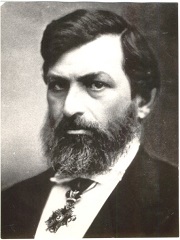


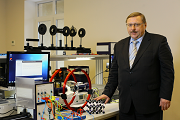
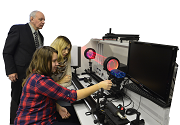
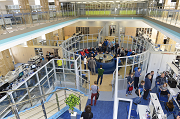
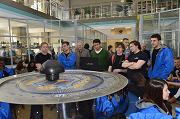
History of PIRT
The PIRT Conference is a event held in September since 1988 at Imperial College in London and since 2003 at Bauman University in Moscow.
| Year | Imperial College, London, UK |
Bauman University, Moscow, Russia |
| 1988 | PIRT I | - |
| 1990 | PIRT II | - |
| 1992 | PIRT III | - |
| 1994 | PIRT IV | - |
| 1996, Sept. 6-9 | PIRT V | - |
| 1998, Sept. 11-14 | PIRT VI | - |
| 2000, Sept. 15-18 | PIRT VII | - |
| 2002, Sept. 6-9 | PIRT VIII | - |
| 2003, 30.06-03.07 | - | PIRT-2003 (XI) |
| 2004, Sept. 3-6 | PIRT IX | - |
| 2005, July 4-7 | - | PIRT-2005 (XII) |
| 2006, Sept. 8-11 | PIRT X | - |
| 2007, July 5-7 | - | PIRT-2007 (XIII) |
| 2008, Sept.12-15 | PIRT XIV | - |
| 2009, July 6-9 | - | PIRT-2009 (XV) |
| 2010, Sept. 10-13 | PIRT XVI | - |
| 2011, July 4-7 | - | PIRT-2011 (XVII) |
| 2013, July 1-4 | - | PIRT-2013 (XVIII) |
| 2015, 29.06-02.07 | - | PIRT-2015 (XIX) |
| 2017, July 3-6 | - | PIRT-2017 (XX) |
Initially the conference aimed to allow free communication for foreign scientists with scientists from the former Soviet Union. It was planned to hold a conference in Kazan University (Russia), where one of the founders of non-Euclidean geometry N.I. Lobachevsky used to work.
In 1988 the first PIRT conference was organized at Imperial College (London), where it is held every two years. The conference is notable for the freedom of scientific views, large reports (up to 40 min), Proceedings published and the participation of Russian scientists.
In 2003 the first PIRT conference was held at BMSTU in Moscow. The event was a success, and it was decided to hold a conference in Moscow every two years. The PIRT Conference was also held in Calcutta (India) and Budapest (Hungary).
The PIRT Conference features talks on multi-dimensional theory of gravity, gravitational-wave experiments, dark matter, cosmic microwave background, space anisotropy search, tests of the theory of relativity and electrodynamics.

PIRT-2007
PIRT-2009
Transport to BMSTU
How you can get to BMSTU from International Airport "Sheremetyevo-II" to metro station ¬ЂBaumanskaya¬ї (three variants):
- Take bus number 817 to the underground station ¬ЂPlanernaya¬ї (about 45 min., 21.5 km). Then go to the underground station ¬ЂTverskaya¬ї, then go to the underground station ¬ЂTeatral'naya¬ї, and go over to the underground station ¬ЂPloshchad' Revolyutsii¬ї, then go to the underground station ¬ЂBaumanskaya¬ї.
- Take bus number 851 to the underground station ¬ЂRechnoi Vokzal¬ї (about 43 min., 21.7 km). Then go to the underground station ¬ЂTeatral'naya¬ї, (about 21 minutes) and go over to the underground station ¬ЂPloshchad' Revolyutsii¬ї, then go to the underground station ¬ЂBaumanskaya¬ї.
- High-speed trains вАЬAeroexpressвАЭ depart from Sheremetyevo Airport to Belorussky Railway station every 20вАУ30 minutes. Travel time is 30вАУ40 minutes to the underground station ¬ЂBeloruskaiya¬ї. Then go to the underground station ¬ЂTeatral'naya¬ї, (about 7 minutes) and go over to the underground station ¬ЂPloshchad' Revolyutsii¬ї, then go to the underground st
From station ¬ЂBaumanskaya¬ї to BMSTU.
From station ¬ЂBaumanskaya¬ї walk to the Rubtsovskaya nab., 2/18 (about 15 minutes).
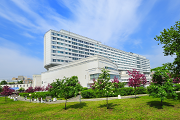
Accommodation
As BMSTU hasn't got a special hotel for guests, you can book a room by yourself in the hotel of Izmailovskii Tourist Complex.
The hotel is nearby the underground station "Partizanskaya" (3 stations from the underground station "Baumanskaya").
Address: 105187, Moscow, Izmailovskoye Shosse, 71, Bldg. 3V, "Vega" Complex.
(All information on http://www.hotel-vega.ru/)
Registration Fee
Registration fee - 200 Euro.
Financial support is provided for scientists from developing countries, for students and post-graduate students.

Auditorium
The Moscow PIRT-2017 will be held in the Study Laboratory Building of BMSTU, situated at the bank of river Yauza. Rubtsovskaya naberezhnaya 2/18.
The Hall is provided with modern equipments for presentations and has a system of synchronizing translation from Russian into English.
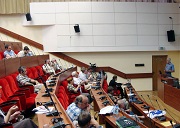
Permission, visa
To prepare the official Letter for Invitation for Russian Embassy in the other countries we need the following information from participants:
- first name, second name (or patronymic name), and surname;
- copy of passport (by e-mail or by fax);
- place of work (Institution, University, etc.). (If you haven't got any, please write down "housekeeper");
- address of work (Institution, University, etc.);
- position;
- dates of visiting Russia (arrival and departure);
- cities and towns to be visited (Moscow and others);
- date of birth;
- place of birth;
- dates of issue and expire of passport;
- city visa.
It is needed to have medical insurance when you visit Russia.
Invitation
- We will send to all participants of the conference letters of invitation to report by E-mail.
- If you need the letter will be set by mail or fax.
- For foreign participants Organizing Committee will preparethe official letters of invitation for the Russian Embassy.
Cultural program
An excursion to the Grand Kremlin Palace and the the Palace of the Facets is planned.
The Grand Kremlin Palace was built from 1837 to 1849 in Moscow, Russia on the site of the estate of the Grand Princes, which had been established in the 14th century on Borovitsky Hill. Designed by a team of architects under the management of Konstantin Thon, it was intended to emphasise the greatness of Russian autocracy. Konstantin Thon was also the architect of the Kremlin Armoury and the Cathedral of Christ the Savior.
The Grand Kremlin Palace was formerly the tsar's Moscow residence. Its construction involved the demolition of the previous Baroque palace on the site, designed by Rastrelli, and the Church of St. John the Baptist, constructed to a design by Aloisio the New in place of the first church ever built in Moscow.
Thon's palace is 125 metres long, 47 metres high, and has a total area of about 25,000 square metres. It includes the earlier Terem Palace, nine churches from the 14th, 16th, and 17th centuries, the Holy Vestibule, and over 700 rooms. The buildings of the Palace form a rectangle with an inner courtyard. The building appears to be three stories, but is actually two. The upper floor has two sets of windows. The west building of the Palace held state reception halls and the imperial family's private chambers.
Its five reception halls (Georgievsky, Vladimirsky, Aleksandrovsky, Andreyevsky, and Ekaterininsky) are named for orders of the Russian Empire: the Orders of St. George, Vladimir, Alexander, Andrew, and Catherine.
Meal
- Coffee breaks are planned between the reports.
- The time for coffee breaks and for lunch will be in programe of the Meeting.
- The Organizing Committee is planning to give a dinner party for participants.
Translation (Interpretation)
- English is the working language at the conference.
- The Organizing Committee can arrange simultaneous translation for participants during some parts of the Conference (the opening and the closing of the Conference, and reports) and excursions.
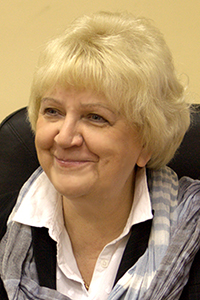
Moscow PIRT Proceedings
According to the results of the conference, some papers will be selected for publishing in a separate issue of the Journal of Physics: Conference Series (JPCS), which is included in Scopus and Web of Science database.
The publication of papers is paid. The cost of one paper now is GBP 45 per paper.
Proceedings licence hosted at:
http://conferenceseries.iop.org/content/quick_links/IOP_Proceedings_Licence.
The articles should be thoroughly revised and put into shape according to requirements.








Preferred format for abstracts and papers
The format of files of abstracts and papers is *.docx and *.doc (you also should send the hard copy in PDF format). An article should be formed as one file.
- Paper size is European A4.
- Margins are 4cm (top), 2.5cm (left and right) and 2.7cm (bottom).
- The paper includes the author name and affiliation (full address including country).
- The paper includes the abstract.
- There are no page numbers, or headers and footers, within the paper.
- The PDF is free of formatting errors (e.g. corrupt equations, missing or low-resolution figures), since conversion from Word to PDF can introduce formatting errors.
- Text is single spaced, not double spaced.
- The PDF file is editable and not password protected.
- All pages are portrait (landscape pages should be rotated).
- Reference lists are checked for accuracy. References can only be linked via Crossref if they are correct and complete.
- Figures are placed within the text, not collected at the end of the document.
- A thorough proofread is conducted to check the standard of English and ensure wording is clear and concise.
Authors must prepare their papers using Microsoft Word according to the guidelines and templates, and then convert these files to PDF.
Registration
Please fill in all report co-authors.
пїњ
Contacts
For all questions related to the conference PIRT-2019, please contact:
dekan-fn@mail.ru.
Scientists Secretaries PIRT-2019:
MPhys Nebritova Olga Alexandrovna (Bauman MSTU, Russia),
Dr. Tyannikova Nina Dmitrievna (Bauman MSTU, Russia).
















































































































































